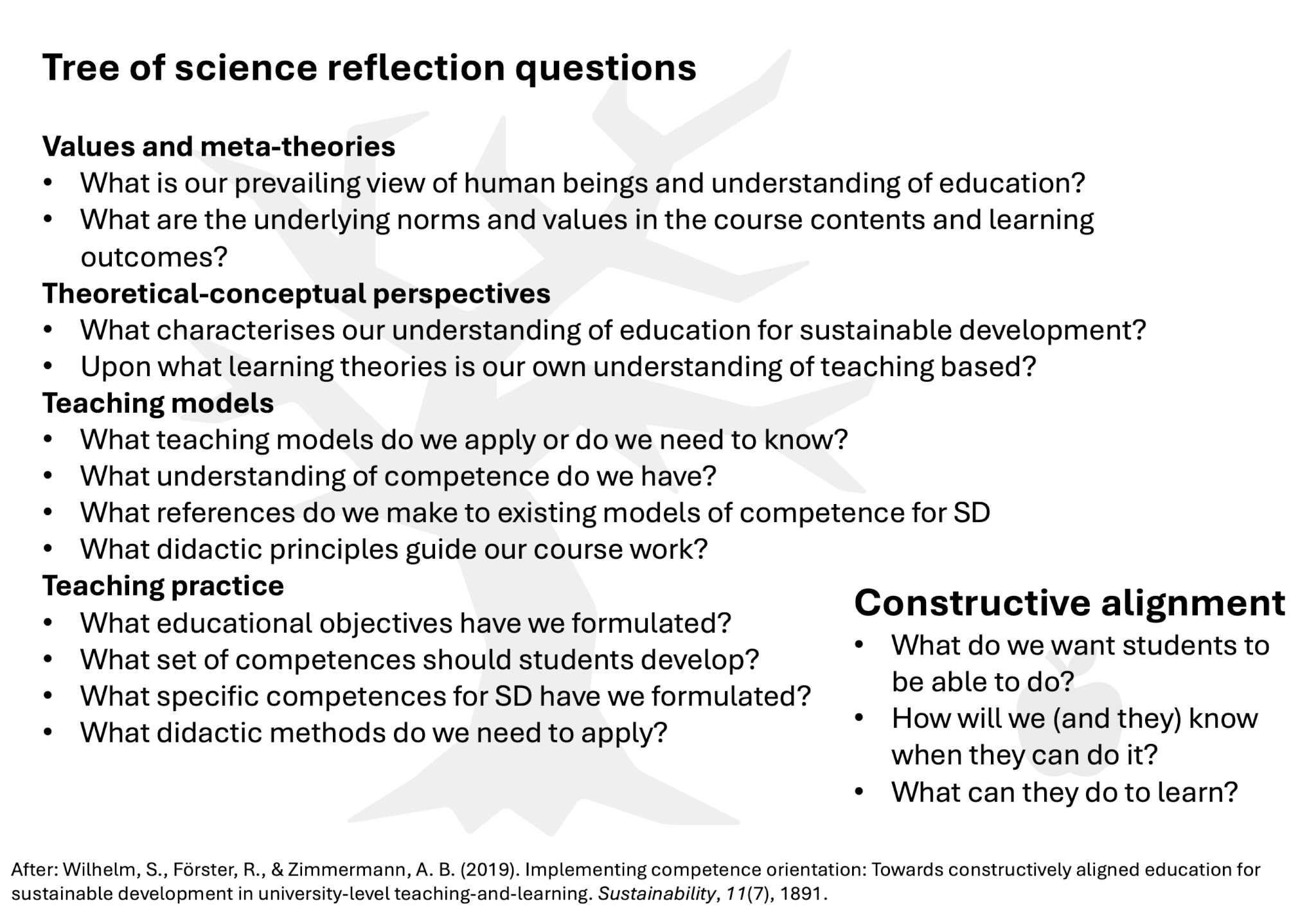
Currently reading “Implementing competence orientation: Towards constructively aligned education for sustainable development in university-level teaching-and-learning” (Wilhelm et al., 2019)
Over the summer, I have read a lot about sustainability competencies. But I still find it really difficult to implement them into curricula (or build curricula around them from scratch), so the article “Implementing competence orientation: Towards constructively aligned education for sustainable development in university-level teaching-and-learning” by Wilhelm et al. (2019) sounds like it could be useful there!
In Wilhelm et al. (2019), they review and compare several frameworks, what the problems with those frameworks are and why it is difficult to compare them, discuss what different people mean by competences, and lots of other stuff that is probably very interesting but that I have read too much of recently. But to the part that I found relevant now:
They use the “tree of science” (a triangle standing on a tip, funnelling high levels of abstraction at the top down to concrete teaching practice) as an organizing structure. At the top level, we find values and meta-theories, like world-views, epistemologies, science paradigms. Below, there are theoretical-conceptual perspectives like constructivism or systems theory. Below that, there are teaching models like for example constructive alignment, and then at the bottom the concrete teaching practice including the learning setting, arrangements, and methods. They operationalize these levels into questions that teachers need to reflect on to find their personal approach:
“Values and meta-theories:
- What is our prevailing view of human beings and understanding of education?
- What are the underlying norms and values in the course contents and learning outcomes?
Theoretical-conceptual perspectives:
- What characterises our understanding of education for sustainable development?
- Upon what learning theories is our own understanding of teaching based?
Teaching models:
- What teaching models do we apply or do we need to know?
- What understanding of competence do we have?
- What references do we make to existing models of competence for SD
- What didactic principles guide our course work?
Teaching practice:
- What educational objectives have we formulated?
- What set of competences should students develop?
- What specific competences for SD have we formulated?
- What didactic methods do we need to apply?”
Wilhelm et al. (2019) then suggest using constructive alignment to ensure that learning objectives, methods, and assessment all work together.
This approach resonates with me, I have been thinking along similar lines of wanting to elicit core values and feelings of professional and personal responsibility before starting discussions about competencies and how to implement them, but I did not think about it in the framework of the tree of science, which is definitely helpful, especially in combination with those reflexion questions.
One idea I have been toying with is using a gap-fill exercise (inspired by one that Lene used in our Intro Course last spring. Unfortunately I cannot find the original reference to give credit where credit is due (the printout version I have is from a UCSB Brown bag from 2015), but the same text is available in this pdf from 2016). I think this could be a great starting point to facilitate such conversations!
Wilhelm, S., Förster, R., & Zimmermann, A. B. (2019). Implementing competence orientation: Towards constructively aligned education for sustainable development in university-level teaching-and-learning. Sustainability, 11(7), 1891.